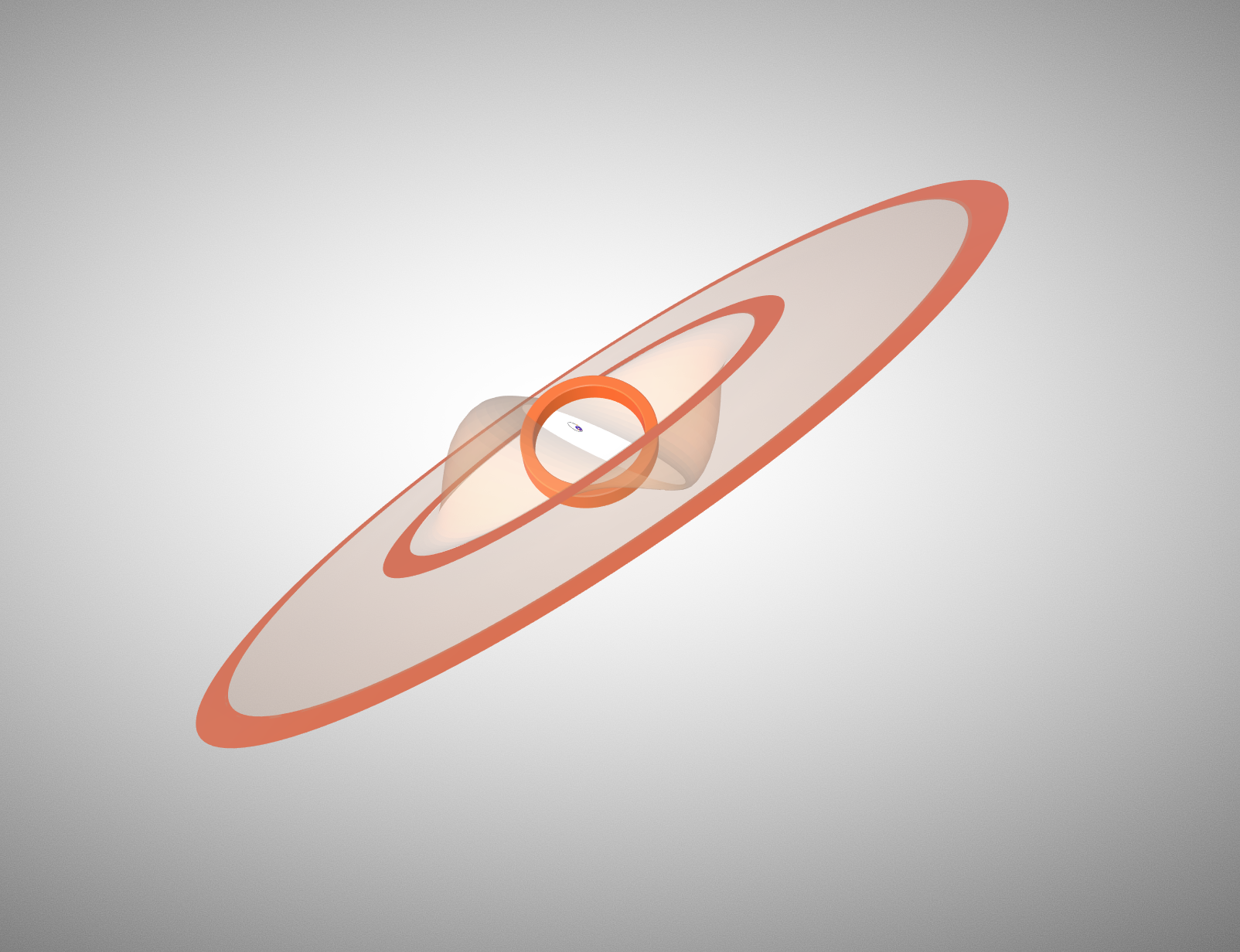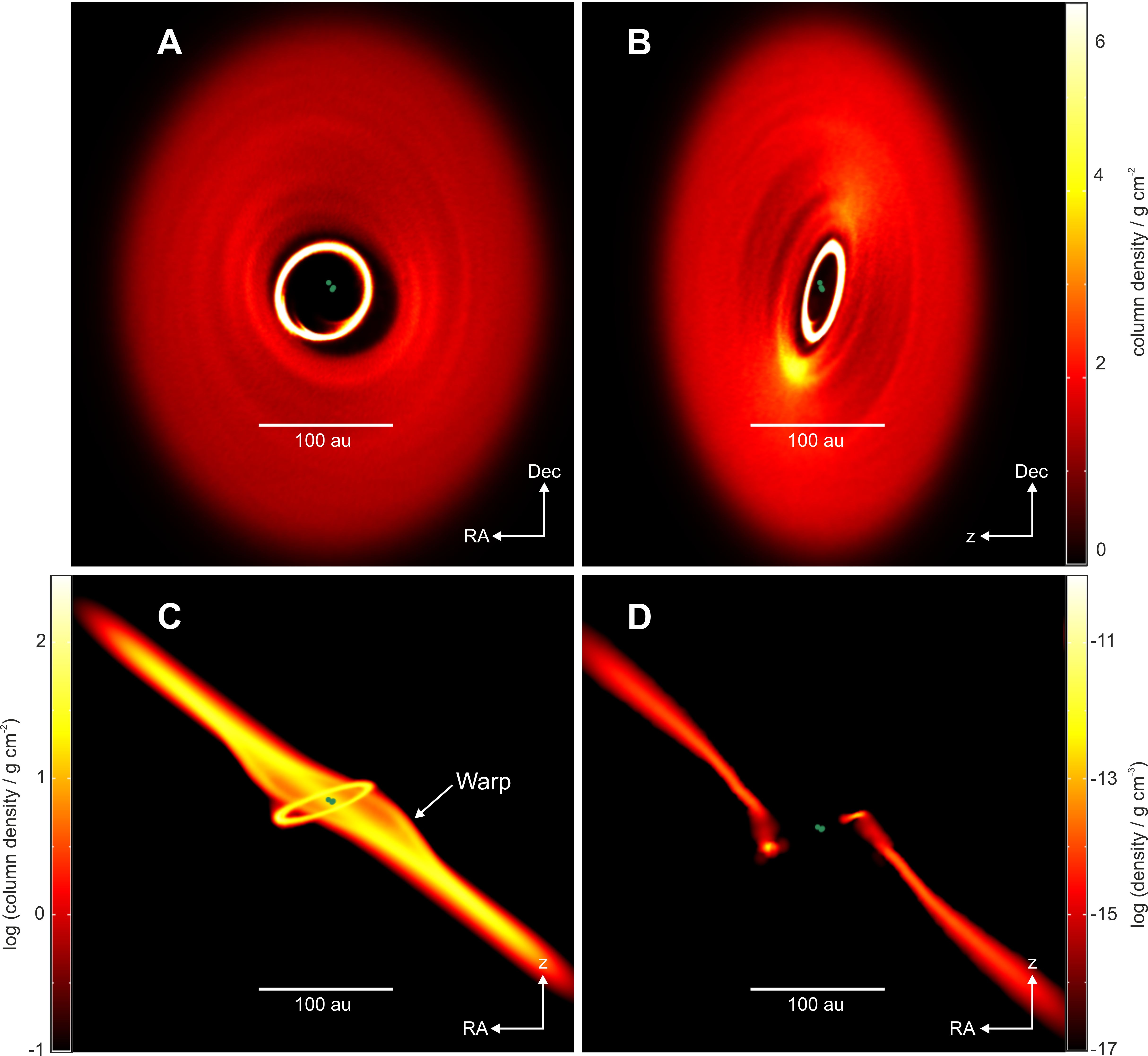Rarest planet in the universe may be lurking in Orion's nose
This could be the first known planet in the universe to orbit three suns at once.

Perched on the tip of Orion's nose, there spins a solar system that could give Tatooine — Luke Skywalker's twin-sunned homeworld — a run for its money.
Known as GW Orionis (or GW Ori) and located about 1,300 light-years from Earth, the system is a rare example of a triple-star solar system, with two suns orbiting one another at the center, and a third star swirling around its siblings from several hundred million miles away. Scientists previously identified the system by its three bright rings of planet-forming dust, nested inside one another like a massive orange bullseye in the sky.
Now, a closer analysis reveals that the rings may hold more than just dust; according to two recent studies, published today (Sept. 3) in the journal Science and May 21 in The Astrophysical Journal Letters, there could be a young planet, or the makings of one, bulging up inside the rings and throwing off the whole system's gravitational balance. The presence of such a planet would not only help explain why the system's inner ring appears to be wobbling around wildly like a broken gyroscope — but, if confirmed, the distant world would also become the first known example of a single planet orbiting three suns at once, the researchers said.
Related: The 12 strangest objects in the universe
"Our simulations show that the gravitational pull from the triple stars alone cannot explain the observed large misalignment [in the rings]," Nienke van der Marel, an astrophysicist at the University of Victoria in Canada and co-author of the May 21 study, said in a statement. "We think that the presence of a planet … has likely carved a dust gap and broken the disk [where the inner and outer rings meet]."
A wobble in the rings
Most solar systems in the universe are made of binary pairs — two stars that orbit each other around a common center of gravity. (Even Earth's sun may have a long-lost twin lurking somewhere beyond Neptune, a recent study claimed). Triple-star systems, like GW Orionis, are much less common, as the combined gravitational pull of three suns can be hard to reconcile; if the third star's mass and distance from the other pair aren't just right, that star can easily get booted out of the system and into interstellar space, a 1994 study in the Monthly Notices of the Royal Astronomical Society found.
Even when three stars align, their combined gravity can have some strange effects. In our solar system, every planet sits within a single disk of gas and dust, and each orbits in a relatively flat plane that's aligned with our sun. In GW Ori, three different rings of dust orbit around the solar system's center, and none of them is aligned with the orbit of the three stars. Added to this, the system's innermost ring is totally misaligned with the two larger, outer rings, jutting diagonally out of the plane like a sinking ship.
Get the world’s most fascinating discoveries delivered straight to your inbox.
Van der Marel and her colleagues discovered this misalignment using observations from the Atacama Large Millimeter Array (ALMA) telescope in Chile. They also found that the outermost ring, which sits 338 astronomical units (or 338 times the average distance between Earth and the sun) from the system's center, contains enough dust mass to build 245 Earth-like planets — making it the single largest protoplanetary disk in any known solar system.
Related: 10 interesting places in the solar system we'd like to visit
In the new Science study, a second team of astronomers examined Ori's wonky rings, this time using both the ALMA and the European Southern Observatory's Very Large Telescope (VLT). These observations revealed the shadow of the system's inner ring draped against the outer rings, allowing the researchers to measure the small ring's precise shape and size. The team also mapped the orbits of the system's three stars over 11 years, covering one complete orbital period.
"This proved crucial to understand how the stars shape the disk," study co-author John Monnier, a professor of astronomy at the University of Michigan, said in the statement.
Together, the two studies show how the misaligned movements of GW Ori's stars may have warped the solar system's dusty disk through a process called "disk-tearing effect," in which the gravitational pull of different stars causes the disk to rip into distinctly separate rings. This is the first time that a misaligned disk has been conclusively linked to the effect — however, the researchers added, the pull of the stars alone does not completely explain the system's strange behavior.
The missing piece of the puzzle may be an undiscovered planet, lurking right at the breaking point between the inner and outer rings of the disk, the researchers said.
"The inner ring contains enough dust to build 30 Earths, which is sufficient for a planet to form in the ring," Stefan Kraus, a professor of astrophysics at the University of Exeter in the U.K. and lead author of the Science study, said in the statement.
Unlike any other known planet, the world would simultaneously orbit all three suns at its solar system's center — setting it apart from other oddball exoplanets like LTT 1445Ab, which orbits a single star in a triple-star system 22 light-years from Earth. There's little concrete evidence for the planet's existence right now, but the mere hint of its presence suggests that planets may be able to form in even the most eccentric, misshapen solar systems, the researchers said.
Alas, even if the hypothetical planet does exist, there will be no Skywalkers gazing wistfully out at the three-sunned horizon; according to the team's models, this world would have to sit roughly 46 AU from its host stars — considerably farther afield than Neptune sits from our sun (30 AU). It would be an inhospitable world, slave to a wild gravitational pull that looks nothing like scientists have ever seen. May the Force be with it.
Originally published on Live Science.

Brandon is the space / physics editor at Live Science. With more than 20 years of editorial experience, his writing has appeared in The Washington Post, Reader's Digest, CBS.com, the Richard Dawkins Foundation website and other outlets. He holds a bachelor's degree in creative writing from the University of Arizona, with minors in journalism and media arts. His interests include black holes, asteroids and comets, and the search for extraterrestrial life.




